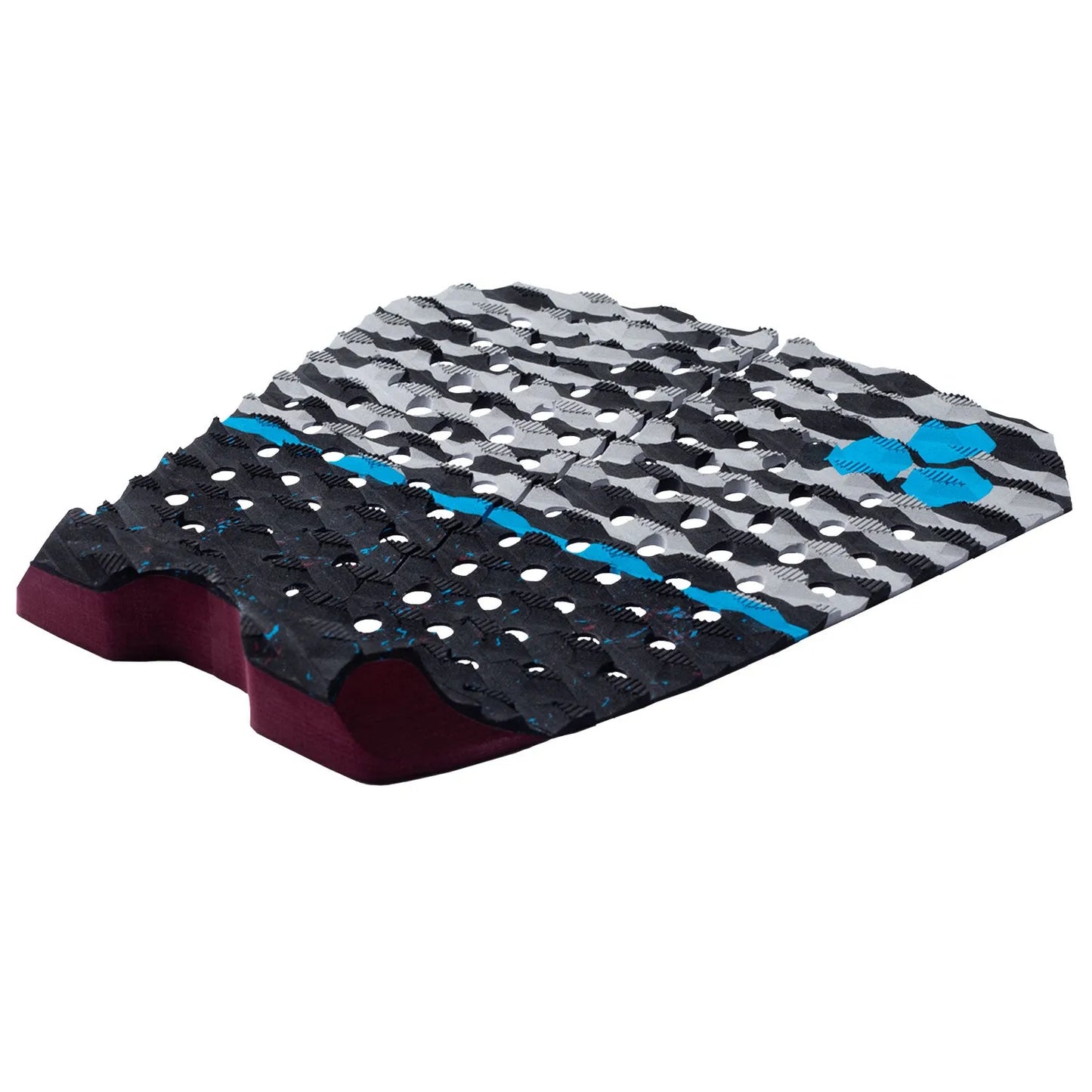Channel Islands Factor 2 Piece Flat Traction Tail Pad Merlot Ocean
Channel Islands Factor 2 Piece Flat Traction Tail Pad Merlot Ocean
Low stock
Couldn't load pickup availability
Channel Islands Factor 2 Piece Flat Traction Pad Camo
CI’s top team riders love the combination of two different groove textures in one traction pad. CI took their Lined-up pattern as the base and combined it with a diamond groove to create the ultimate high-performance traction texture.
View our full traction pad range here
- 30mm Vert kick bevelled corners
- Mixed groove grip pattern
- Flat- no arch
- Die cut holes for added grip &reduced weight
- BioGrip Natural EVA foam
- 3M® Marine Grade adhesive
Who Are Channel Islands
Channel Islands Surfboards, founded in 1969, is a renowned surfboard brand based in Santa Barbara, California. Its co-founder, Al Merrick, began shaping boards with a focus on high performance and innovation.
Initially, Merrick made boards for local surfers before gaining wider recognition. His boards became popular with professional surfers. The company grew, becoming synonymous with elite competition-level boards, partnering with top athletes like Kelly Slater.
Throughout the 1980s and 1990s, Channel Islands became a leader in board design, producing models for various wave conditions. The brand has continued evolving, blending traditional craftsmanship with cutting-edge technology and materials.
Today, Channel Islands remains a staple in the surfing world, crafting boards known for performance, durability, and style. Their designs cater to surfers of all levels, from beginners to professionals, shaping the future of surfboard innovation.
Traction Pads: History and Evolution
A surfboard traction pad is a non-slip surface applied to a surfboard to enhance grip. It provides extra control for surfers, particularly in the back foot area, where more pressure is exerted during maneuvers. Traction pads are typically made from foam or rubber and are placed on the tail of the board. They are used in place of, or alongside, wax to ensure surfers maintain their footing while riding waves.
The history of traction pads dates back to the 1980s. Before that, surfers relied primarily on wax for grip. Wax was applied to various parts of the board, but it often required frequent reapplication. The idea of using a traction pad emerged as a more permanent solution. Early traction pads were basic, often consisting of simple rubber strips or foam pads. They were first popularized by professional surfers seeking consistent performance in all conditions.
The first major innovation in traction pads came from the development of the “deck grip,” which provided a larger area for grip than traditional wax. This was especially beneficial for aggressive surfers who needed to keep their feet firmly planted while executing powerful maneuvers. The pads gradually evolved into more intricate designs, with raised patterns and textured surfaces to maximize traction.
As surfing grew in popularity, so did the demand for more customizable and high-performance pads. By the 1990s, manufacturers began offering a range of traction pads with different configurations. These included multi-piece pads with various angle cuts and kicktails. The kicktail feature, a raised section at the back of the pad, became a standard in modern designs. It helped surfers maintain their foot position during sharp turns and aerial tricks.
In the 2000s, traction pads became more specialized. Companies experimented with different materials, including EVA foam and more durable rubber blends. Customization options increased, allowing surfers to choose pads that suited their style and board shape. Some traction pads even incorporated environmentally friendly materials, reflecting the growing awareness of sustainability within the surf industry.
Today, traction pads are a standard piece of equipment for many surfers. They continue to evolve with advancements in materials and design, offering enhanced performance and comfort. The simple yet effective traction pad has come a long way since its inception, helping surfers gain better control on the waves.
Share




